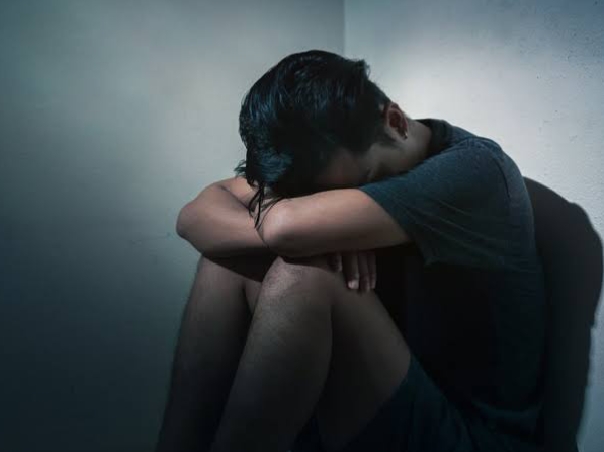Depression is an everyday companion to PTSD, affecting many individuals who struggle to cope with the lingering effects of trauma. While the two conditions are distinct, they often overlap, with depression amplifying the emotional burden of PTSD. This article explores why PTSD often leads to depression, its impact on daily life, and strategies for managing this debilitating symptom.
Why PTSD Leads to Depression
PTSD and depression are interconnected due to the way trauma rewires the brain. Experiencing a traumatic event can disrupt the brain’s ability to regulate emotions, diminishing the production of “feel-good” chemicals like serotonin and dopamine. The result is a deep sense of hopelessness, emptiness, and disconnection.
In addition, the core symptoms of PTSD, flashbacks, nightmares, hypervigilance, and avoidance often contribute to depression. For example:
Isolation: Avoiding friends and family to prevent triggers can lead to loneliness.
Sleep Disturbances: Chronic fatigue from nightmares or insomnia reduces energy and motivation.
Loss of Purpose: Reliving trauma can leave individuals feeling stuck in the past, unable to move forward.
The Impact of Depression on Daily Life
Depression not only affects mood but also influences how individuals engage with the world around them. Common effects include:
Loss of Interest: Hobbies, relationships, or career goals may feel meaningless.
Physical Symptoms: Depression often brings fatigue, appetite changes, and chronic aches.
Cognitive Impairment: Difficulty concentrating or making decisions can hinder daily tasks.
Risk of Self-Harm: Depression may lead to feelings of worthlessness or even suicidal thoughts.
Strategies for Managing Depression in PTSD
While depression can feel overwhelming, there are evidence-based strategies to help regain a sense of control and hope:
1. Therapeutic Interventions
Trauma-Focused Therapies: Approaches like EMDR (Eye Movement Desensitization and Reprocessing) or Cognitive Behavioral Therapy (CBT) address both PTSD and depression by processing trauma and reframing negative thought patterns.
Interpersonal Therapy (IPT) focuses on improving relationships and building a supportive social network to counter feelings of isolation.
2. Medication
Antidepressants, such as SSRIs (Selective Serotonin Reuptake Inhibitors), can help regulate mood and alleviate symptoms of depression. Always consult a healthcare professional to determine the best course of treatment.
3. Lifestyle Adjustments
Physical Activity: Exercise releases endorphins, improving mood and reducing stress. Activities like yoga or walking are particularly effective.
Healthy Diet: Eating a balanced diet can help stabilize mood and energy levels. Foods rich in omega-3s, whole grains, and leafy greens are particularly beneficial.
4. Building Connections
Reaching out to trusted friends, family, or support groups can provide emotional relief and reduce feelings of isolation.
5. Mindfulness Practices
Mindfulness meditation helps individuals stay present and recognize depressive thoughts without judgment. Guided meditations and apps like Headspace or Calm can provide a starting point.
Conclusion: A Light Beyond the Darkness
Depression in PTSD can feel like a weight that’s impossible to lift, but understanding its connection to trauma is a key step toward healing. Individuals can reclaim their sense of purpose and joy through therapy, self-care, and support. While recovery is gradual, each step toward emotional balance brings individuals closer to a brighter and more fulfilling life.
Intrusive Thoughts in PTSD: Unwanted Memories That Won’t Fade
Intrusive thoughts are a hallmark symptom of PTSD, where distressing memories or images of trauma invade the mind without warning. These thoughts are often vivid and unsettling, disrupting daily life and causing emotional pain. This article will explore why intrusive thoughts occur, their impact, and strategies for regaining control over them.
Why PTSD Causes Intrusive Thoughts
Intrusive thoughts occur because traumatic memories are often stored in fragmented, unprocessed ways in the brain. Instead of being filed away as past experiences, these memories remain active and are triggered by sensory cues or emotional states. The brain’s hyperactive amygdala amplifies fear and stress responses, making these thoughts feel immediate and inescapable.
The Impact of Intrusive Thoughts
Intrusive thoughts can disrupt daily life in several ways:
Emotional Distress: These thoughts often trigger fear, shame, or guilt.
Difficulty Focusing: Constantly battling unwanted memories makes it hard to concentrate on tasks.
Avoidance Behaviors: People may avoid situations, conversations, or media that could trigger intrusive thoughts.
Physical Symptoms: These thoughts often bring a racing heart, nausea, or headaches, linking mental and physical distress.
Strategies to Manage Intrusive Thoughts
While intrusive thoughts can feel overwhelming, there are tools and techniques to reduce their frequency and intensity:
1. Mindfulness-Based Cognitive Therapy (MBCT)
MBCT combines mindfulness and CBT techniques to help individuals observe intrusive thoughts without reacting. This practice can reduce the emotional power of these memories over time.
2. Thought-Stopping Techniques
When an intrusive thought arises, intentionally redirecting focus can help. Techniques include:
Visualizing a stop sign.
Replacing the thought with a positive image or memory.
Counting or focusing on sensory details around you.
3. Journaling
Writing down intrusive thoughts can help externalize them, making them feel less overwhelming. Over time, this practice can provide clarity and reduce their emotional intensity.
4. Grounding Techniques
Grounding exercises, like focusing on breathing or using tactile objects, can anchor the mind in the present moment and interrupt intrusive thoughts.
5. Therapeutic Support
Professional therapy, such as trauma-focused CBT or EMDR, can address the root trauma driving intrusive thoughts, helping to reduce their occurrence and intensity.
Conclusion: Reclaiming Mental Space
Intrusive thoughts in PTSD are a painful reminder of trauma, but they don’t have to control your life. With the right strategies and support, individuals can learn to observe and manage these thoughts, reclaiming their mental and emotional space. Healing from intrusive thoughts is a journey, but each small step forward brings greater peace and resilience.


